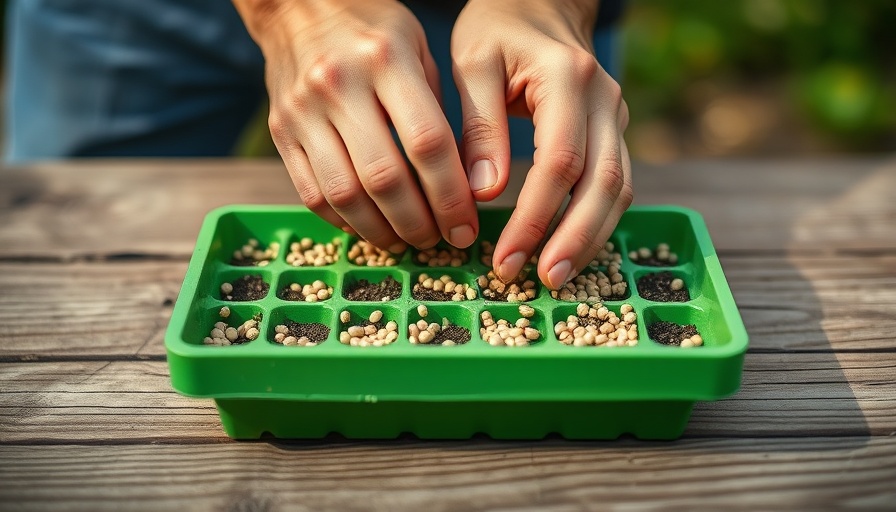
Why Wildflower Aesthetics Matter
Planting wildflowers is not just an aesthetic choice; it's an opportunity to restore the natural balance that has been disrupted over decades. Wildflower meadows offer a burst of color while providing critical habitats for local wildlife. With over 97% of the UK’s natural meadows lost since the 1930s, reintroducing native flora into our gardens serves as a vital step toward ecological restoration. Not only do these flowers beautify our landscapes, they also help combat biodiversity loss and support pollinators, thus enhancing our ecosystem.
The Best Techniques for Sowing Wildflowers
When it comes to the practicalities of planting wildflowers, various methods cater to different types of gardeners. For small spaces or more controlled environments, sowing seeds in trays or plug modules is ideal, allowing for robust seedling development before transplanting. However, if you're looking to cover larger areas, broadcasting seeds onto a prepared seed bed can yield satisfactory results. Both methods come with their own set of advantages and learning curves, and understanding the nuances of each can elevate your garden’s biodiversity.
Choosing the Right Wildflower Mix for Your Space
Your choice of wildflower seeds largely depends on your gardening goals. Are you after a colorful meadow, or do you prioritize wildlife? A traditional meadow mix featuring British wildflowers ensures that your plants provide food and shelter for pollinators while keeping the local ecosystem intact. However, non-native 'pictorial meadows' may offer stunning visuals—albeit at the expense of habitat integrity. By fully understanding the difference, you can curate a space that aligns with your eco-conscious values.
Bridging the Gap Between Tradition and Modern Gardening
Modern gardening can benefit from blending traditional techniques with contemporary practices. For example, utilizing sustainable home design principles—like drought-resistant plants within wildflower meadows—addresses water conservation effectively. Additionally, incorporating organic compost and mulch enhances soil fertility while minimizing household waste. Consider this: By planting wildflowers and creating your own compost pile, you’re engaging in a zero-waste practice that enriches the environment.
Future Outlook: The Growing Popularity of Wildflower Gardening
As more homeowners become aware of the environmental impact of their gardening choices, the popularity of wildflower gardens is surging. Not only are these gardens low-maintenance, but they also require fewer chemical fertilizers and pesticides, promoting a healthier ecosystem. Predictions suggest that as awareness of eco-friendly gardening grows, so too will the variety and availability of native wildflower seeds, making it easier than ever for homeowners to create sustainable landscapes.
Practical Tips for Success in Wildflower Gardening
For those ready to embark on the wildflower journey, a few key tips will set you up for success. Ensure your soil is well-prepared, weed-free, and moist before sowing. If you’re opting for trays, remember to give seedlings adequate time to develop before exposing them to spring conditions. Don’t forget about watering and pest management—both essential for a thriving wildflower meadow.
Reflecting on the Benefits of Wildflower Gardening
Having a wildflower garden is more than merely an aesthetic endeavor; it's a powerful statement of your commitment to eco-friendly gardening practices. Every seed planted not only contributes to biodiversity but also enhances the ecological stability of your community. Caring for your wildflower space can be a meditative practice, connecting you with the rhythm of nature as you nurture its growth.
 Add Row
Add Row  Add
Add 




Write A Comment